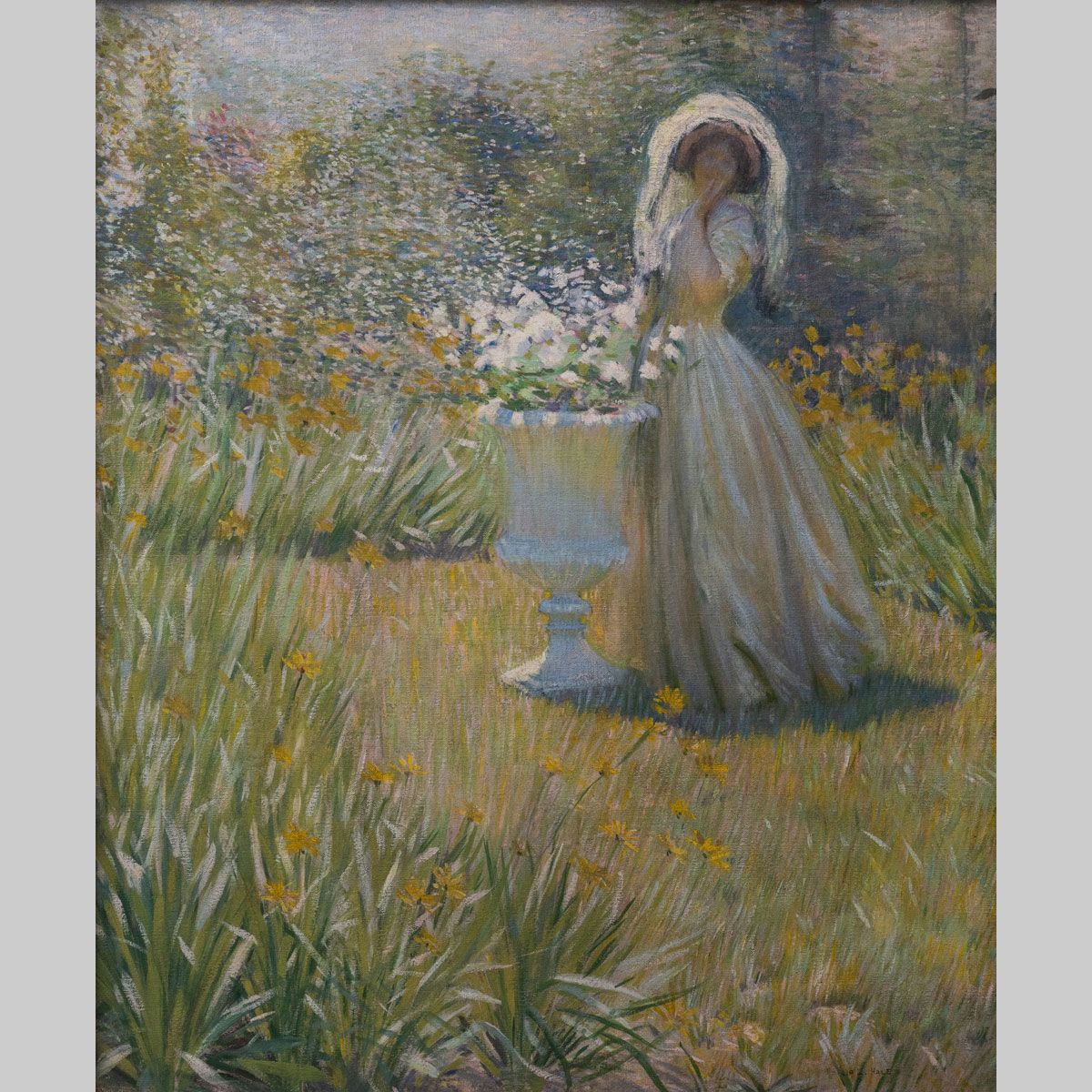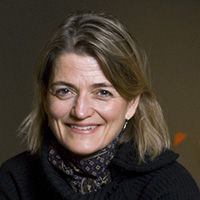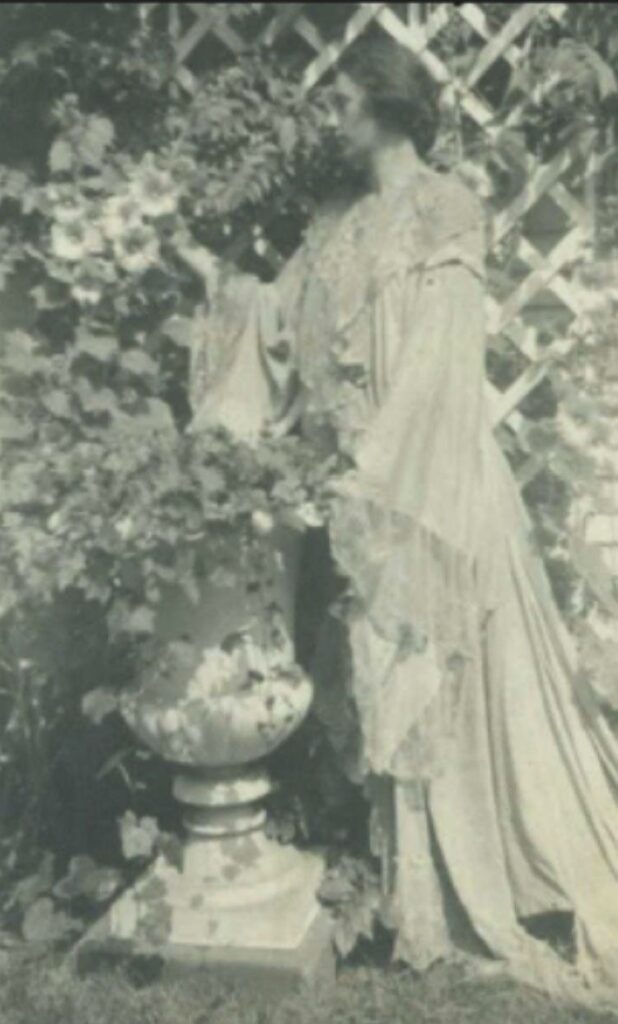Philip Leslie Hale (1865–1931)
In the Garden, c. 1900
Oil on canvas
McMullen Museum of Art, Boston College, Gift of Jane Frances Welch Cronin and Daniel A. Cronin Jr., 2018.76

Diana Larsen
Assistant Director, McMullen Museum

Hale was an influential art teacher, writer, and critic as well as a leading painter of the Boston school, along with his teachers at the School of the Museum of Fine Arts, Boston, Edmund C. Tarbell (1862–1938) and Frank Weston Benson (1862–1951).
Like many of his contemporaries, Hale went to Paris in 1887–92 to further his academic training at the Académie Julian and the Ecole des Beaux-Arts. During that time, Hale spent many summers at Giverny in rural Normandy with his friend and fellow artist, Theodore Earl Butler, son-in-law of impressionist Claude Monet (1840–1926), who lived nearby. In the Garden exhibits the plein air subject, bright light, and broken brushwork of French impressionism, especially popular with Boston collectors in the late nineteenth century and exemplifies the growing popularity of gardening as a middle-class leisure pursuit at the turn of the twentieth century. Industrialization had given rise to this suburban hobby as an antidote to city life. Replacing the formality of Gilded Age gardens, the American Colonial Revival, or wild, garden became all the rage. In the Garden is likely set in the Hales’ garden in the Boston suburb of Dedham. A photograph set there (see image), shows the same urn depicted in the present painting. With his free brushwork and soft color palette, Hale captures the summer sunshine bathing the wildflowers that glints off the woman’s translucent veil over her hat. Tarbell’s The Blue Veil (see image) shows a woman in a similar fashionable head covering. In Hale’s painting, the shadow cast by the woman’s swishing skirt, her shaded face, and hand gesture create a transitory pose suggesting she has suddenly become aware of the viewer.



